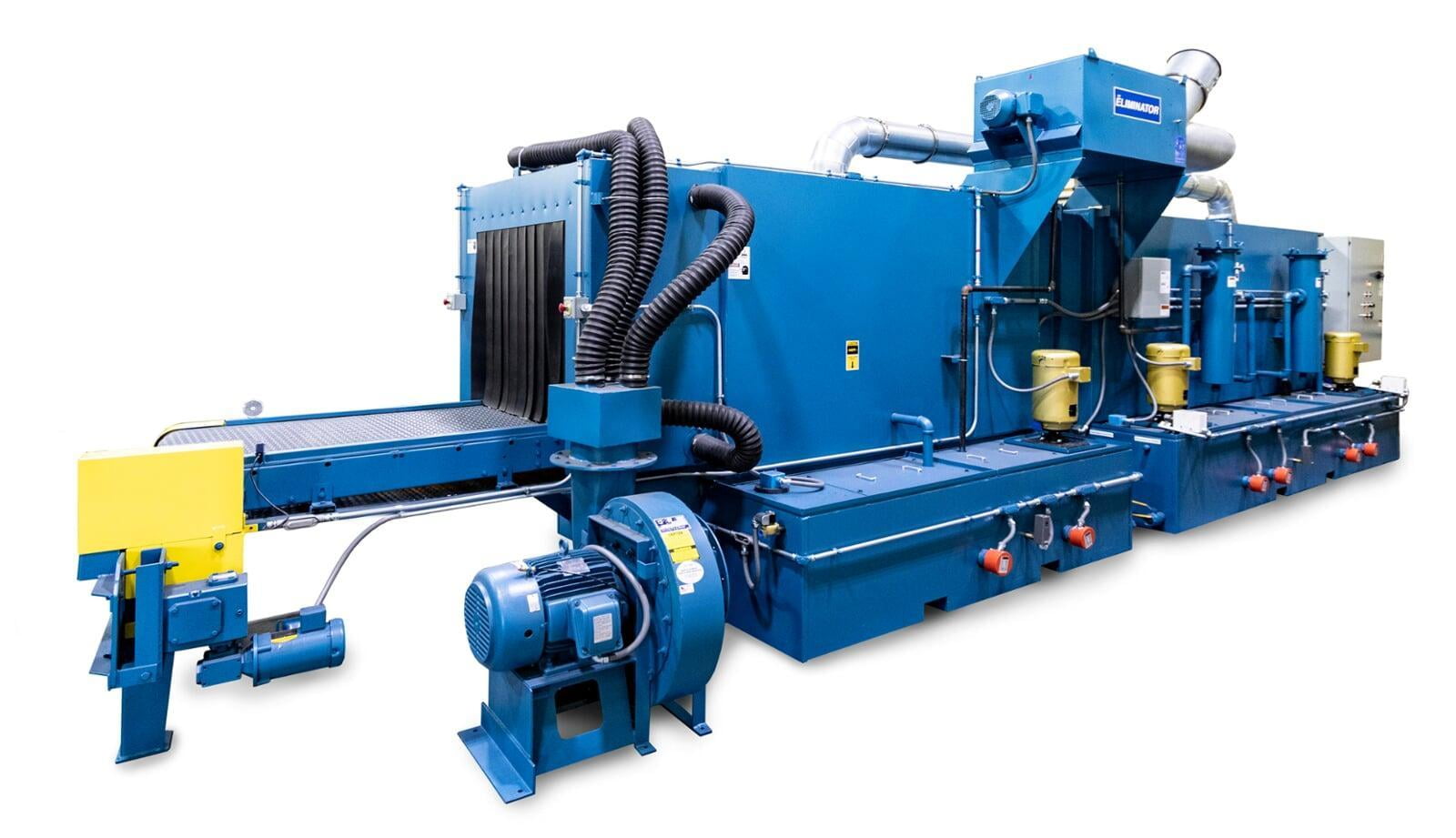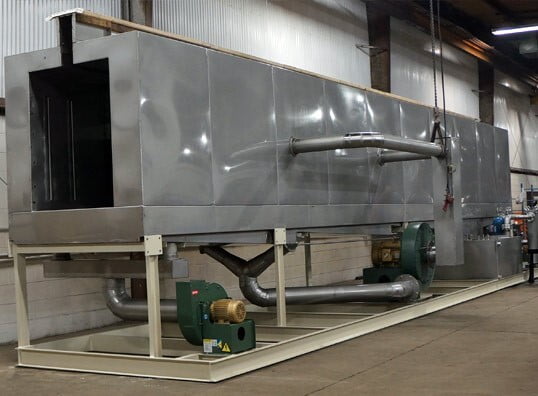The most common cleaning methods used by parts washer are manual, automated, ultrasonic and immersion agitation.
– Manual cleaning. Typically a sink on a drum style or a vat style design.
Manual parts washers are best suited for a low volume of cleaning – generally less than 45 minutes per day, says Spaziani. They are also ideal for smaller parts where the contaminants can be removed with a brush under low pressure flow and the parts do not require a high level of clean.
– Automated cleaning. Automated parts washers are intended for operations where parts are cleaned more than 45 minutes per day. In this case, as a general rule, transitioning to an automated process would actually save money, he says.
Other considerations for automated cleaning:
– The number of parts cleaned per day requires a more automated approach.
– The parts being cleaned have a certain design where they can’t be cleaned effectively through a manual process (i.e., blind holes).
– The level of clean required cannot be achieved in a manual process.
The most common automated parts cleaning methods are:
– High-pressure spray. These are cabinet-style washers that operate like a dishwasher where the parts are cleaned by being hit with high pressure spray from various angles while the parts rotates on some type of turntable to ensure a complete cleaning. Typically, heated, aqueous-based chemistries are used.
Aqueous-based solvents are water-based solutions and can be composed of detergents, alkaline chemicals, microbes or any combination of these. Instead of dissolving grease or solids, aqueous-based solvents use heat, agitation, soap action and time to break dirt into smaller particles.
High-pressure spray parts washers are great for the harder-to-get-off stuff that may be baked onto a part, as well as the heavier greases and oils, and are most effective for cleaning exterior surfaces,”
A big advantage here is that these units are typically very customizable and you can add conveyor systems, drying cycles, rinse cycles, etc.
– Ultrasonic cleaning. With these vat-style units, parts are immersed into a cleaning bath and hit with ultrasonic energy to produce high energy bubbles that vibrate contaminants off surfaces for a high level of clean. This is the preferred method for cleaning blind holes and crevices, and smaller parts.
They are a bit more expensive than other technologies, this method is chosen typically because the process, and the clean requirements or the design of the parts to be cleaned demand ultrasonic cleaning.
– Immersion agitation. With this type of parts cleaner, also a vat-style, the parts are immersed into the bath and are either agitated up and down or side-to-side on a tray, or hit with high-pressure spray under immersion or a combination of both.
Immersion agitation is ideal for both exterior and interior cleaning that spray alone and ultrasonics can’t reach, and for removing contaminants that require soaking to break down effectively for removal.
Since the part is immersed and needs to be brought back up through the contaminated bath, this method may not suffice when high levels of clean are required.
Depending on what you are removing from the parts, simple agitation may not provide enough action or impact to remove the contaminants. Adding spray under immersion may help.


